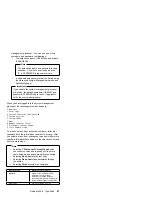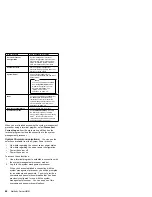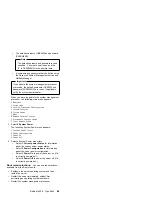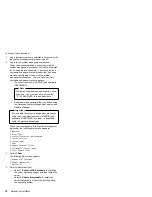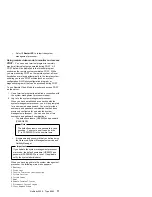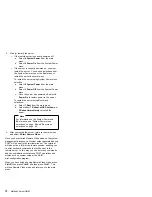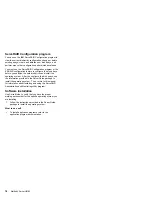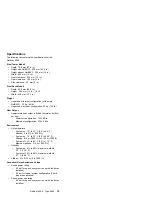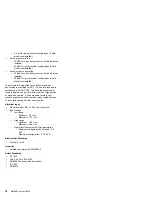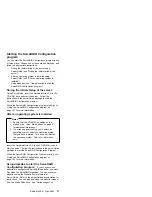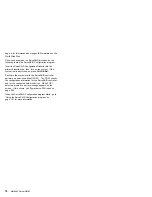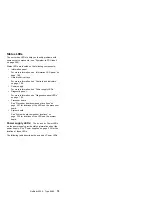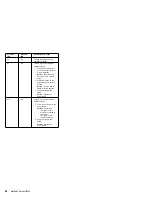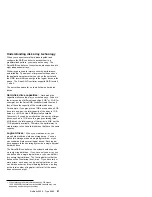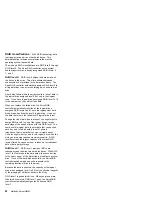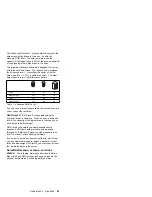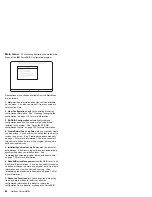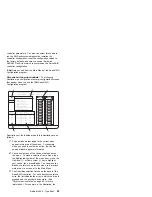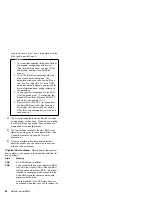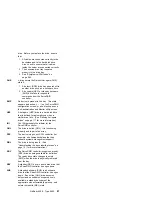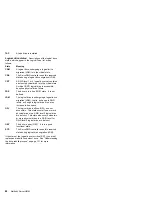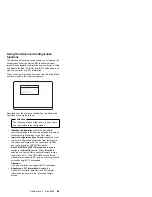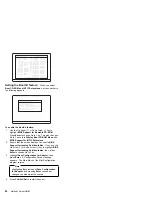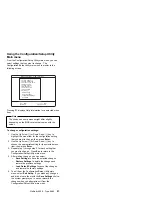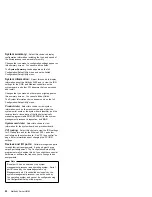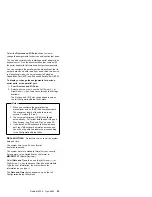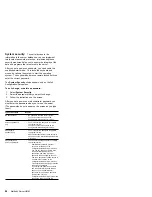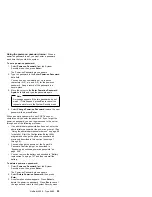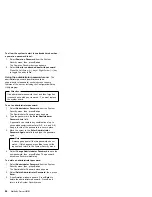
Understanding disk array technology
When you connect several hard disks together and
configure the RAID controller to access them in a
predetermined pattern, you create a
disk array. The
ServeRAID controller on the system board supports up to
eight independent arrays.
Disk arrays are used to improve security, performance,
and reliability. The amount of improvement depends on
the application programs that you run on the server and
the RAID levels that you assign to the logical drives in the
arrays. The ServeRAID controller supports RAID levels 0,
1, and 5.
The server has space for up to six hot-swap hard disk
drives.
Hard disk drive capacities:
Hard disk drive
capacities influence the way you create arrays. Drives in
the array can be of different capacities (1 GB
1
or 2 GB, for
example), but the ServeRAID controller treats them as if
they all have the capacity of the
smallest disk drive.
For example, if you group three 1 GB drives and one 2 GB
drive into an array, the total capacity of the array is 1 GB
times 4, or 4 GB, not the 5 GB physically available.
Conversely, if you add a smaller drive to an array of larger
drives, such as a 1 GB drive to a group containing three
2 GB drives, the total capacity of that array is 4 GB, not the
7 GB physically available. Therefore, the optimal way to
create arrays is to use hard disk drives that have the same
capacity.
Logical drives:
When you create an array, you
group hard disk drives into one storage area. You can
define this storage area as a single
logical drive, or you
can subdivide it into several logical drives. Each logical
drive appears to the operating system as a single physical
hard disk drive.
The ServeRAID controller on the system board supports
up to eight logical drives. If you have only one array, you
can define it as a single logical drive, or you can divide it
into several logical drives. The first logical drive that you
define will be the startup (boot) drive. If you have two or
more arrays, each array can be one logical drive, or you
can divide each array into multiple logical drives, as long
as the total number of logical drives for all of the arrays
does not exceed eight.
1
When referring to hard-disk-drive capacity, GB means
1 000 000 000 bytes; total user-accessible capacity may vary
depending on operating environment.
Netfinity 5500 - Type 8660
81
Summary of Contents for 86604RU - Netfinity 5500 - 4RU
Page 2: ......
Page 8: ...vi Netfinity Server HMM...
Page 214: ...1 Hard disk drive 2 Drive tray handle open position 206 Netfinity Server HMM...
Page 244: ...Screws 236 Netfinity Server HMM...
Page 247: ...Netfinity 5500 Type 8660 239...
Page 314: ...306 Netfinity Server HMM...
Page 324: ...316 Netfinity Server HMM...
Page 325: ...Related service information 317...
Page 326: ...318 Netfinity Server HMM...
Page 327: ...Related service information 319...
Page 340: ...332 Netfinity Server HMM...
Page 341: ...Related service information 333...
Page 346: ...338 Netfinity Server HMM...
Page 402: ...IBM Part Number 00N5902 Printed in U S A S1 L 98 3...

